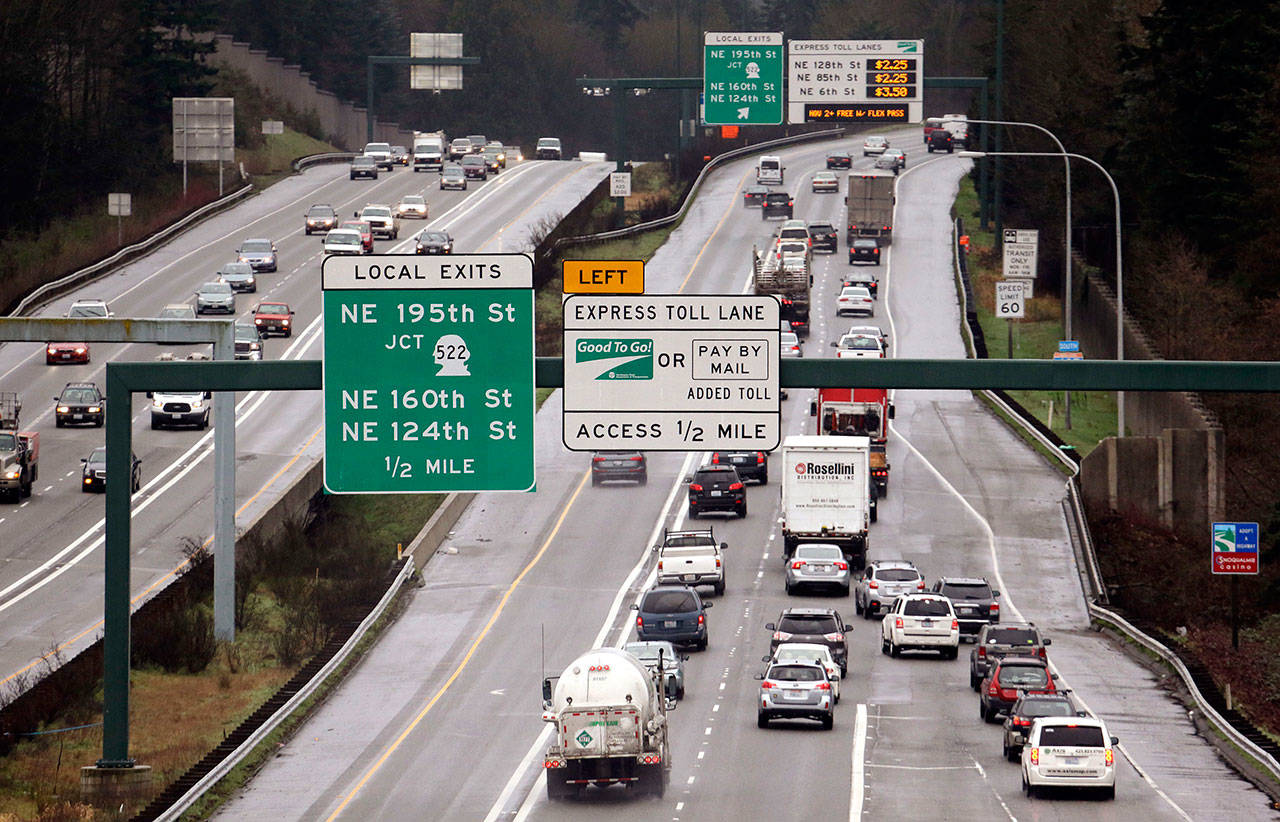“Nobody goes there anymore; it’s too crowded.”
— Yogi Berra
The New York Yankee legend was talking restaurants, but the well-traveled Yogiism also applies to Snohomish County and the larger Puget Sound region as congestion on our major highways and other transportation corridors becomes so packed, so often, that businesses and residents might begin to question whether this is where they want to be.
The state Department of Transportation 2017’s Congestion Report shows the region is facing “historically long commute times,” along I-5, I-405 and other major corridors, as reported last week by The Herald’s Street Smarts columnist Melissa Slager. Congestion throughout the central Puget Sound region has increased 22 percent with a record 60.8 billion miles driven in 2016, a result of an increase in population, residential and commercial growth and an influx of new jobs.
For most of us, the report only confirms what we are already experiencing as we sit in traffic, regardless of which direction, route and mode of transportation we’re using.
We’re two years along from a $16.1 billion transportation package — and a nearly 12-cent-a gallon gas tax increase — passed by the Legislature that over a 16-year-period will address many of the bottlenecks that contribute to that congestion. As will Sound Transit’s ST3 work to extend the Link light rail system north between Lynnwood and Everett.
But our region’s continued growth, especially in Snohomish County, could make it difficult to see improvements in commute times. And already it’s clear that more work will be needed, especially in the county.
The two corridors with the most pressing needs for congestion relief are the U.S. 2 trestle between Everett and Lake Stevens, and I-405, between Lynnwood and Bothell.
U.S. 2 trestle: The aging westbound trestle is in need of replacement and additional lanes to handle the traffic that has resulted from the region’s unexpected growth within nearby cities and unincorporated areas. But replacement estimates total between $700 million and $1 billion, and a trestle project, because planning wasn’t far enough along, wasn’t included in the 2015 transportation budget.
Local city and county officials are working to lobby for trestle funding, as discussed in a guest commentary in the Dec. 17 Herald. But even as the state Department of Transportation has started looking at sources of funding for a trestle replacement, some have begun sniping at one potential source, hoping to scuttle it before it can get fair consideration.
With the transporation agency’s study set to be released next month, state Rep. Mark Harmsworth, R-Mill Creek, who represents the 44th District, posted a chart to his Facebook page from the study that showed a range of potential toll rates for the trestle, to build opposition to using tolls as one funding source for trestle replacement. It worked, and a petition already is making the rounds urging lawmakers to take a “no tolls” pledge.
I-405: While I-405 has seen major projects in recent years, most-significantly the addition of express toll lanes, work that was part of the 2015 transportation budget continues.
But again, growth is threatening to swamp the planned improvements. Data from the state shows that traffic volumes on I-405 are now 30 percent higher than what was anticipated for 2020, two years from now.
A group of I-405 stakeholders, which includes the mayors of Bothell, Everett, Lynnwood, county officials, the Snohomish County Cities association and the Snohomish County Committee for Improved Transportation are urging more attention from the Legislature and Sound Transit to secure funding and beginning planning for additional projects for the northern I-405 corridor, including a project to add lanes and ramps to the interchange of I-405 and Highway 522, as well as projects that would add direct-access ramps for transit, more park-and-ride capacity, and the addition of a second express toll lane for each direction of I-405 between Highway 522 and I-5.
The group is asking lawmakers to make northern I-405 projects a priority for funding.
But that funding, ultimately, has to be a priority for the county’s and region’s residents, because we all depend on these highways.
There are different pots from which these projects can be funded. For example, Sound Transit, in assembling its ST3 package, used a combination of car tabs, property tax and sales tax revenue. There are other sources, including transportation benefit districts and the state’s investigation of a pay-by-mile tax. And there’s still hope that the Trump administration may deliver on its promise of federal infrastructure investment.
Regardless of the pot, however, the money comes from us. Washington residents pay among the highest state gas taxes in the nation, which can make it seem unfair — galling, even — that the ability to travel a few miles an hour faster is available to those willing — and financially able — to pay a toll.
But there’s evidence that express tolling on I-405 has improved travel times or kept them from getting even worse, and that’s important if transit is to remain an option that helps cut congestion.
Without the context of the full study available, it’s also too soon to reject tolls as a possible funding source for the U.S. 2 trestle.
Work to alleviate congestion on the U.S. 2 trestle I-405 has to begin soon. As those who will benefit from that work, both in better commute times and a strong regional economy, we will have to pay our share. And we can’t delay.
We have come to Yogi’s fork in the road, and we have to take it.
Talk to us
> Give us your news tips.
> Send us a letter to the editor.
> More Herald contact information.

























